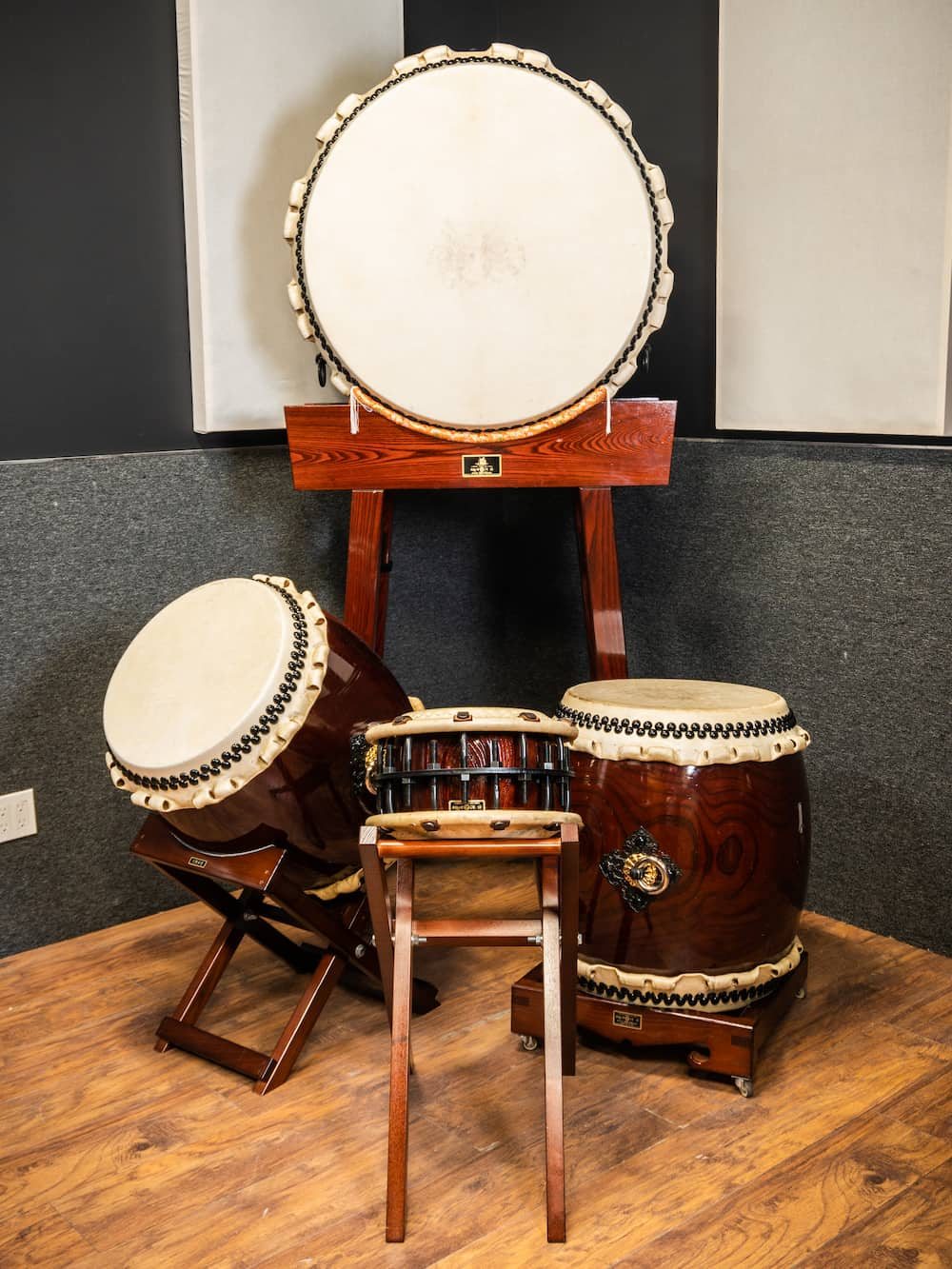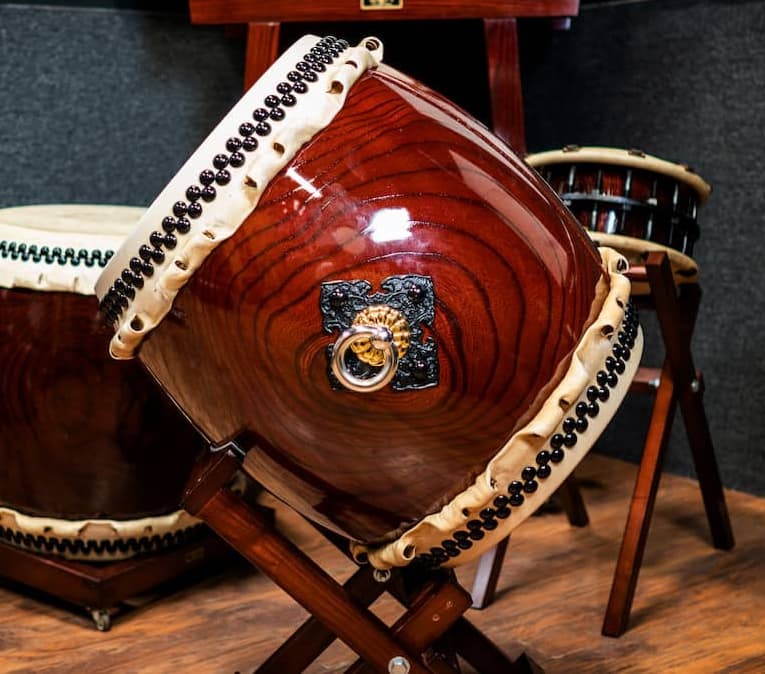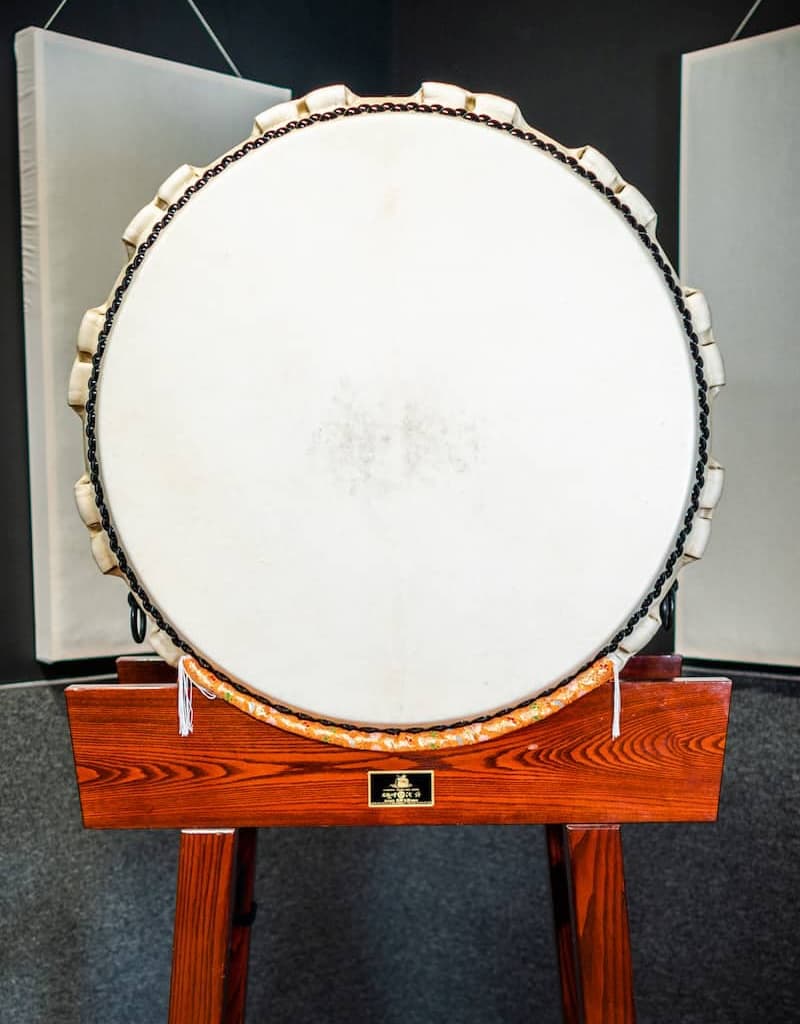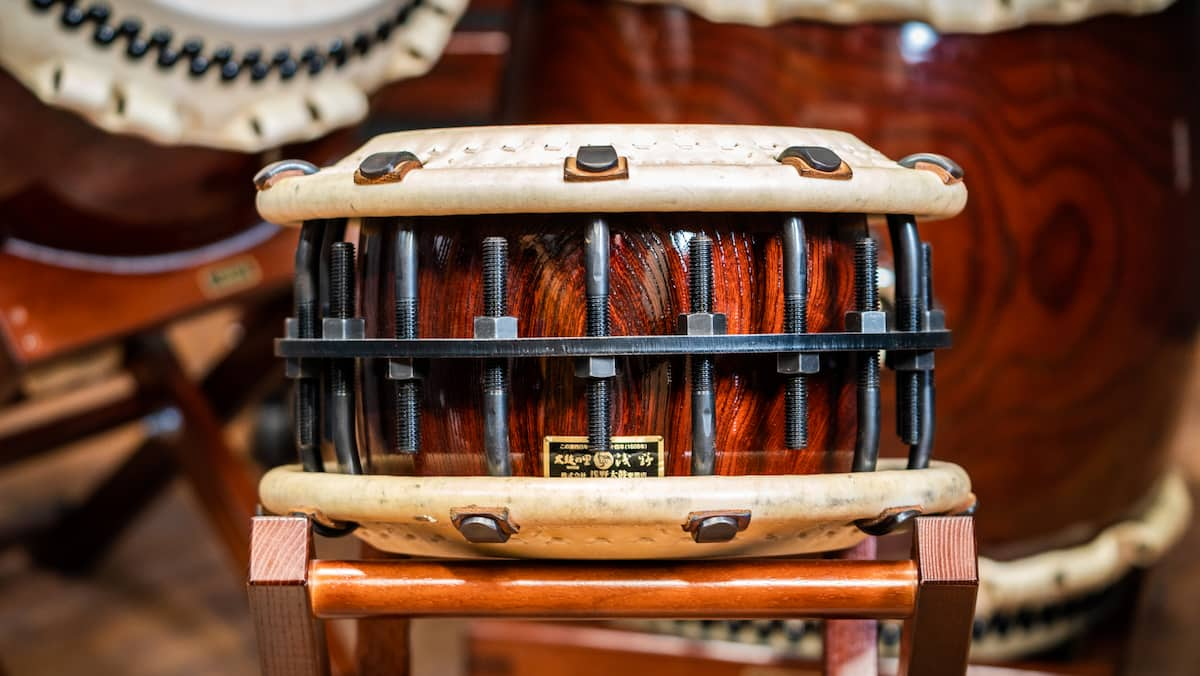
Recorded by Taiko expert, Isaku Kageyama, this pack allows you to control the sounds of an entire Taiko Ensemble from your drum set, and much more!
Isaku Kageyama is one of the most recorded taiko artists, combining decades of training in Japan with modern music production techniques to produce work that is authentic and creative. His unique skillset as a performer, producer, and engineer has made Isaku a first-call collaborator for the recording studio as well as live performances
The Recording Process
Isaku reached out to us about producing a Taiko sample pack in the late summer of 2020. We jumped on the opportunity right away, and knew that we wanted this pack to be for Sensory Percussion 2.
When asked why he chose Sunhouse to collaborate on this pack with, Isaku replied, “Sensory Production (Sunhouse) bridges the gap between acoustic and electronic drumming in ways no other product does. It gives the performer the best of both worlds - the infinite flexibility and possibilities of the digital realm, while maintaining the familiarity of the acoustic instrument. I wanted to see taiko drums expressed in this digital/acoustic hybrid world. I wanted to share the sounds of taiko with other drummers, and hear these sounds utilized in the work of other artists.”
For the pack, Isaku Kageyama recorded his Shimedaiko (14-inch), Chudaiko (16-inch), Okedo (18-inch) and Odaiko (32-inch).
He meticulously recorded each of his four taiko in methodical detail, recording ten zones on each drum:
- Center
- Off Center
- Edge
- Muted
- Rimshot Center
- Rimshot Edge
- Rim Shoulder
- Rim Tip
- Stick Shot
- Cross Stick
He recorded each zone at three overall velocity levels, and ten round-robin hits per level. When asked about the level of detail he put into recording his drums for this pack, Isaku said:
“I wanted to share the experience of being behind the taiko drums with the world. I wanted other drummers to hear what we (taiko players) hear when we are playing taiko. Unless you play taiko yourself, it’s very rare to hear taiko exactly the way the performer hears them. I wanted to share that sensation with the world, so that people will be inspired to create cool taiko music we haven’t heard yet.”
Later that year in a separate recording session he recorded an Atari Gane Bell and traditional Taiko vocalizations.
We also asked Isaku about what still excites him about taiko:
“I’ve been playing taiko for over 36 years, which seems like a long time, but I feel like I’m just getting started. There is so much to learn and explore. Every now and then, I might think I’ve got a handle on something, but the next moment that feeling is gone. It’s always changing and evolving. Technology like Sensory Percussion is a part of that. It just never gets old.”

The Sets
There are eight exciting sets included in the Taiko pack:
Taiko Ensemble
In this set, the power of your drum strokes determines how many Taiko sound. Quiet hits will only activate a Shimedaiko, and louder hits will consecutively summon the sounds of the Okedo, Chudaiko, and Odaiko. There is a pitched down Odaiko kick mapping, as well as Atari Gane bell mapped to Tom 1 and vocalizations mapped to Toms 2 and 3.
Taiko Instruments
This set contains Sensory Percussion 2 one-to-one drum mappings of each of the individual taiko:
Shimedaiko Okedo Chudaiko Odaiko
Additionally there are Vocalizations and Atari Gane mapped creatively to Sensory Percussion Tom 3 and 4, respectively.
Pitchy Taiko Instruments and Pitchy Taiko Ensemble
The “pitchy” variations of the sets allow you to modulate the pitch of the taiko in real time with timbre and velocity assignments.
Taiko Throng 1 and Taiko Throng 2
These sets include sequences of full drum maps, which means that your playing is locked into an interesting cycle (that you can break up by playing any other rhythm than a straight pulse).
A segment of the Taiko Throng 1 sequence is:
Step 1 - [Shimedaiko and Chudaiko] Step 2 - [Okedo] Step 3 - [Shimedaiko and Odaiko]
So if you were to play a cross stick, center hit, and a rimshot. The sounds the set would make would be: Simultaneous cross stick from the Shimedaiko and Chudaiko Center hit from the Okedo Simultaneous rimshot from the Shimedaiko and Odaiko
Taikomorphosis and Taikogenomic Sequence
Taikomorphosis slowly morphs through a sequence of taiko sounds that you can control with your playing. These slow sequencers are driven by LFOs, and are guided by different slow-speeds on different drum, but the drum map is blended from center-to-edge. That means that if you play repeatedly on the head of the drum, the blend will blend center/edge zones from different taiko depending on how the LFOs are phasing at that moment.
For example, if you play between the center and edge of the drum, you might be blending the center and edge zones of a Chudaiko and Okedo for one moment, but then perhaps the Chudaiko will morph into an Odaiko.
Taikogenomic Sequence is a complex, stereophonic 64-step drum map sequence. Like the Taiko Throng kits, entire drum maps are cycled, and, if you turn on the “polymeter” toggle, you will add a layer that cycles in 63, creating evermore complex rhythms as you play. And you can increase/decrease the stereo spread with the “spread” knob.



